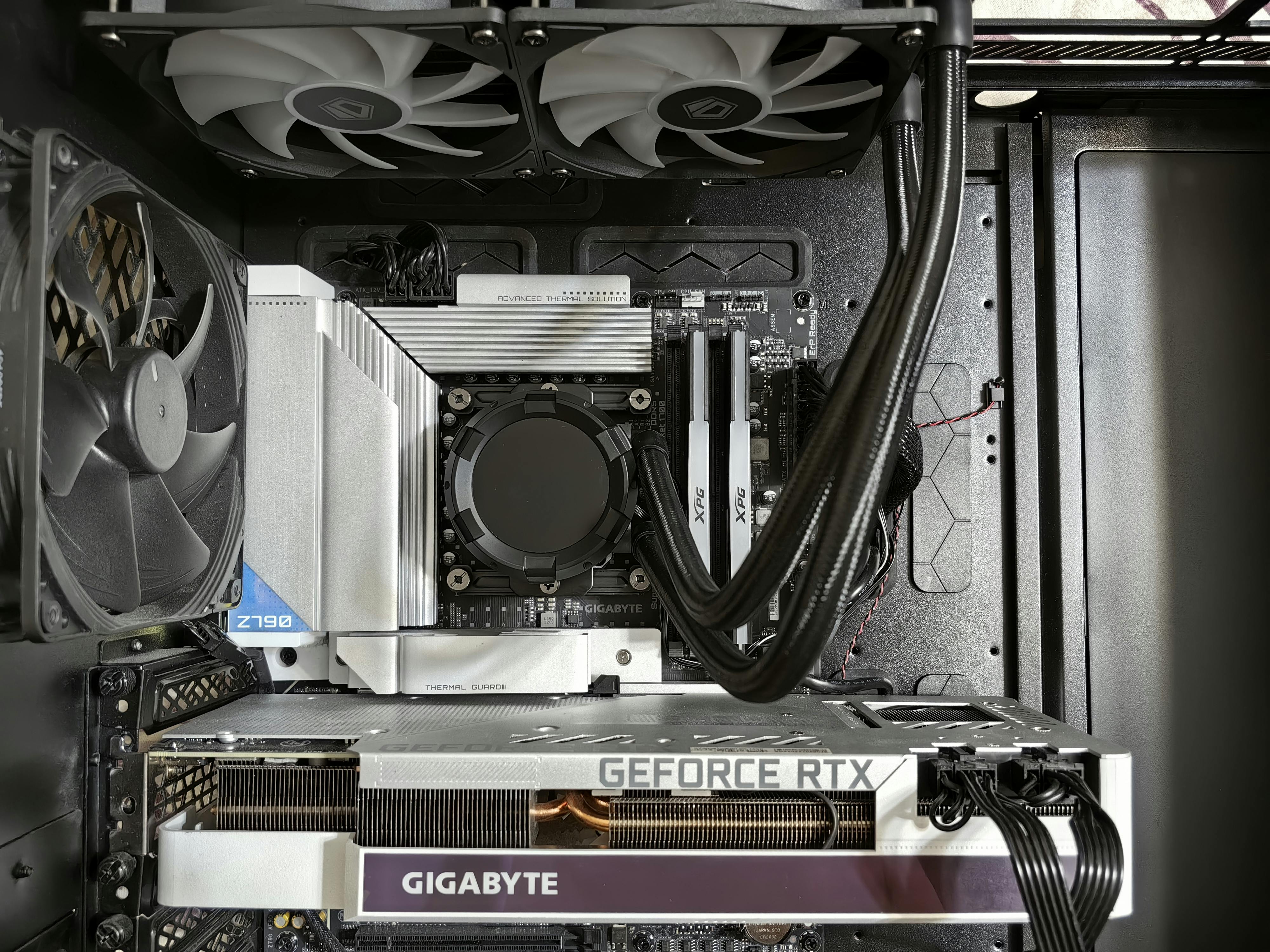
When you envision a powerful gaming setup, a monstrous PC tower gleaming with RGB might come to mind, or perhaps, for those who value portability, a top-of-the-line gaming laptop promising absolute frame-crunching performance. However, the very nature of confining such immense power — like Nvidia’s GeForce RTX GPUs and Intel’s mobile chips — into the tight constraints of a laptop chassis inevitably brings a significant challenge: heat. These diminutive enclosures naturally cause components to reach smelting-hot temperatures, a design reality that can lead to discomfort, performance throttling, and even long-term hardware damage. While modern gaming laptops are engineered to operate at high temperatures, excessive heat beyond comfortable levels can transform your high-performance machine into an uncomfortable, loud, and inefficient device.
The latest high-powered gaming laptops often see their CPUs, such as the Intel Core i9-13900HX and Core i9-14900HX, hit their 100°C thermal limit and hover constantly in the 90°C range. These high-clocking, 24-core mega beasts, much like their desktop counterparts, are designed to run hot for maximum performance, yet they have little cooling headroom in their compact form factors. Even AMD CPUs, while at times more efficient, still grapple with significant heat. GPUs, like powerful Nvidia GeForce RTX 4090s, can also run toasty, typically in the 70°C to mid-80°C range depending on the laptop’s cooling prowess, but usually not as hot as the CPU. Fortunately, many high-end gaming laptops incorporate advanced cooling solutions like vapor chambers, multiple fans, heatsinks, and exotic thermal interfaces like liquid metal. Despite these innovations, if your keyboard feels too hot to touch or your room starts to resemble a sauna, it’s clear that further action is needed.
This in-depth guide is designed to empower you with a comprehensive suite of strategies, ranging from beginner-friendly adjustments to expert-level tweaks, to effectively cool down your gaming laptop. We’ll explore fourteen critical tips and tricks to mitigate heat buildup, ensuring your device maintains optimal temperatures, reduces fan noise, and sustains peak gaming performance. By understanding and implementing these solutions, you can prevent your gaming laptop from becoming a “money pit” due to overheating and enjoy a more comfortable, reliable, and powerful gaming experience.

1. **Tweak Power and Fan Settings for Optimal Balance**One of the most straightforward and effective initial steps to manage your gaming laptop’s temperature and noise is to adjust its predefined cooling profiles. These settings are typically found within proprietary software suites provided by manufacturers, such as Alienware’s Adrenaline or Asus’s Armoury Crate. Within these applications, the two primary controls that will directly impact your cooling performance are the power settings and the fan speed settings. Understanding how to judiciously balance these can make a significant difference in your gaming experience.
Maximizing your power settings will inherently demand higher fan speeds to keep temperatures in check, leading to what can often be a cacophony of noise emanating from your laptop. Conversely, reducing power settings will help mitigate heat, but if lowered too much, it can severely hamper your gaming performance. Most laptops offer a ‘balanced’ setting, which aims to strike a neutral equilibrium between performance and heat generation, often serving as a good starting point. If you find the fan noise distracting, especially without headphones, lowering the fan speed settings to a more tolerable level is an option, even if it means accepting a slightly higher operating temperature.
Beyond simple profiles, many power profile tweaks fundamentally limit the amount of power the CPU or GPU can consume, thereby directly reducing temperatures. While this concept is sound, it’s crucial to combine this with other optimization strategies to ensure you aren’t sacrificing too much performance in the process. Newer generation gaming laptops are beginning to integrate AI power profiles, which intelligently adapt to different scenarios to mitigate heat. Technologies like Nvidia’s WhisperMode, part of Max-Q, use AI to balance performance with heat and noise, while Nvidia GeForce Experience can optimize game settings, and Dynamic Boost further helps with power optimizations across main components.
Read more about: Unlock the Universe: Your Ultimate Guide to DSLR Astrophotography – From First Snap to Stellar Masterpiece!

2. **Leverage Upscaling Technologies like DLSS and FSR for Efficiency**If you’re struggling to find that ideal sweet spot between maintaining optimal noise levels and achieving strong performance solely through laptop settings, turning your attention to in-game settings for demanding titles can be incredibly beneficial. Specifically, advanced upscaling technologies like Nvidia’s DLSS (Deep Learning Super Sampling) and AMD’s FSR (FidelityFX Super Resolution) offer a powerful solution to this dilemma.
For owners of modern RTX 40 series laptops, utilizing Nvidia’s DLSS 3 with frame generation can significantly reduce power consumption and heat output while remarkably maintaining high frame rates. DLSS 3, even on ‘balanced’ settings, provides impressive visual quality alongside substantial power savings, making it a highly worthwhile feature. The addition of frame generation pushes performance even further, simultaneously cutting down on power usage. It’s important to note, however, that frame generation capabilities are currently exclusive to Nvidia’s RTX 40 series products.
AMD offers its own comparable technology in FSR, which functions similarly to DLSS by boosting frame rates at lower power settings. A key advantage of FSR is its broader hardware compatibility; it doesn’t necessitate a specific class of GPUs to be activated, making it accessible to a wider range of gaming laptops. By enabling either DLSS or FSR in your games, you can effectively offload some of the rendering burden from your GPU, leading to cooler operation without a noticeable sacrifice in visual fidelity, thereby extending your comfortable gaming sessions.
Read more about: Beyond the Hype: Decoding the True Impact of Every Gaming PC Component Pros Rely On
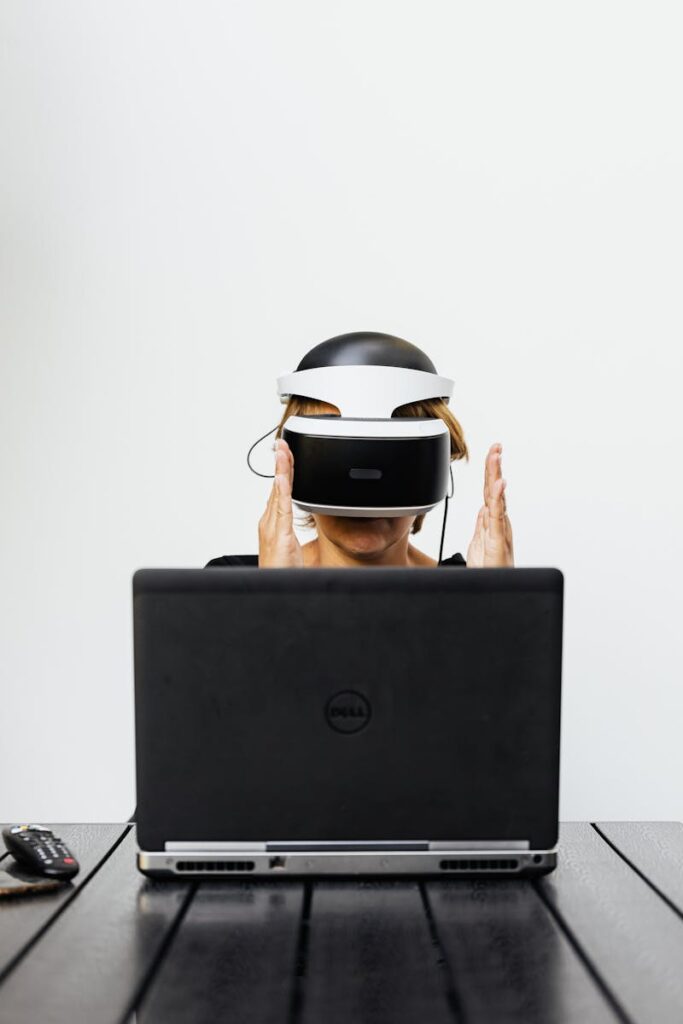
3. **Smartly Optimize In-Game Graphics Settings**Beyond leveraging advanced upscaling, a direct and impactful way to reduce heat generation and fan noise is by intelligently adjusting your in-game graphics settings. While the allure of ‘ultra-high’ graphics settings is strong, often the visual difference when dropping them down to ‘high’ is negligible to the human eye, yet the performance and thermal benefits can be substantial.
Consider lowering settings that are particularly resource-intensive. For instance, reducing texture quality can yield significant benefits, allowing your laptop to maintain higher frame rates even with lower power settings. Modern graphics technologies like ray tracing and path tracing, while visually stunning, demand immense horsepower from your GPU. Dialing these down to a ‘low’ setting or even turning them off can provide enough performance headroom for a game to run smoothly with considerably less fan noise and heat.
Other settings can also contribute to heat reduction. Enabling VSync can cap your frame rate to your monitor’s refresh rate, preventing your GPU from rendering unnecessary frames that generate extra heat. Similarly, lowering the game’s resolution can provide a performance boost. Some specialized laptops, such as the Razer Blade 16, even allow dual-booting into different resolutions like 1080p or 4K. While lower resolutions generally allow higher performance due to fewer pixels, it’s worth noting that they can sometimes stress the CPU more, potentially increasing its heat output. The key is to find a balance that looks good and feels smooth without pushing your hardware to its thermal limits.
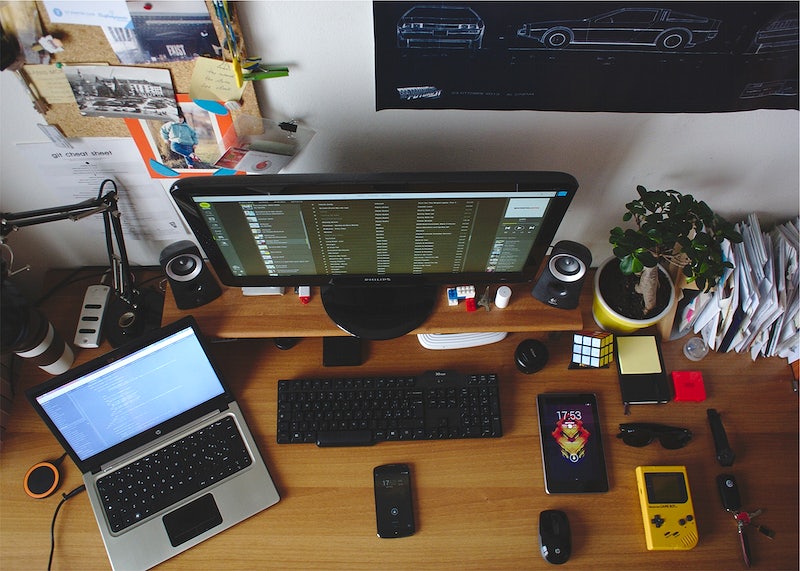
4. **Ensure Proper Laptop Positioning and Utilize Cooling Accessories**One of the fundamental principles of effective laptop heat management revolves around ensuring proper airflow. When using your laptop, it is absolutely critical to place it on a hard, flat surface. Soft surfaces like beds, couches, or even your lap can easily block the crucial air vents on the underside and sides of your device, severely restricting airflow and trapping hot air within the chassis. Proper airflow is non-negotiable for keeping your laptop cool.
To further enhance ventilation and heat dissipation, consider investing in a laptop stand or cooling pad. A simple laptop stand effectively elevates your device off the desk, creating a vital gap beneath it that allows fresh air to circulate freely. This seemingly small adjustment can significantly improve the laptop’s built-in cooling apparatus’s ability to do its job. Many users find that just lifting the laptop is enough to maintain comfortable temperatures, especially if their vents are located underneath.
If a simple stand isn’t sufficient, a specialized laptop cooling pad can offer more robust thermal support. These pads often incorporate built-in fans that actively push cool air towards your laptop’s underside, directly assisting in moving heat away and dispersing it. However, not all cooling pads are created equal, and what works well for one laptop might not be ideal for another. For example, the Razer Blade 16, as noted in the context, benefits more from a simple stand than a heavy-duty, fan-based pad like the IETS GT500. Some cooling pads can also be quite noisy at higher fan speeds, but thankfully, most offer adjustable fan speeds, allowing you to strike a harmonious balance between cooling effectiveness and noise levels.

5. **Undervolt Your CPU/GPU for Cooler Operation (Expert Level)**For enthusiasts seeking more granular control over their gaming laptop’s thermal profile, undervolting presents an advanced, yet highly effective, solution. This technique involves reducing the voltage supplied to your CPU and/or GPU without necessarily lowering their clock speeds. The principle here is that components often receive more voltage than is strictly necessary for stable operation, and by carefully reducing this, you can achieve cooler temperatures and lower power consumption with only a minimal, if any, performance impact. This makes undervolting a powerful tool in the fight against overheating.
Many enthusiast-grade laptops provide the capability to tweak BIOS settings, offering a gateway to such advanced modifications. Additionally, software tools like Intel’s XTU (Xtreme Tuning Utility) can facilitate adjustments to CPU-related power settings. It’s crucial to approach this with caution, as only very modest changes are typically allowed, and excessive adjustments can lead to system instability or crashes. The context explicitly warns that tweaking your BIOS is an expert-level technique not recommended for novices. However, for those comfortable with tinkering, undervolting can significantly reduce heat generation by making the components work less ‘hard’ from an electrical perspective.
Laptop manufacturers are also making these options more accessible. For instance, the Asus ROG Strix 16 received a BIOS update to specifically add undervolting features. Even if you prefer not to delve into the BIOS, many laptop manufacturers’ proprietary software suites, such as Asus’s Armoury Crate or Razer’s Synapse, offer custom settings for CPU and GPU performance. These utilities can unlock various ways to tweak Intel CPUs and provide additional customizations. While predefined profiles are always available, true performance and heat savings are often best achieved through some degree of custom tweaking, empowering users to fine-tune their device’s thermal and performance characteristics.

6. **The Critical Role of Fresh Thermal Paste (Expert Level)**This particular tip is reserved for the most experienced enthusiasts—those who are comfortable with opening up their laptop and delving into its internal components. Applying fresh, or a higher-quality, thermal paste is a critical, yet often overlooked, method to significantly reduce temperatures on both the CPU and GPU. Over time, the thermal paste applied at the factory can degrade, dry out, or become less efficient at transferring heat from the hot chips to the cooling system’s heatsinks. This degradation can lead to a noticeable increase in operating temperatures.
Replacing the existing thermal interface material with a high-quality alternative can yield substantial improvements, especially for laptops that are a few years old. Even newer models, despite often coming with custom thermal interfaces, can sometimes benefit from an upgrade to a premium thermal compound. The goal of thermal paste is to fill the microscopic gaps between the integrated heat spreader (IHS) of the CPU/GPU and the cold plate of the heatsink, maximizing heat conduction. A superior paste ensures more efficient heat transfer, allowing the cooling system to work more effectively at dissipating thermal energy.
However, it’s imperative to acknowledge that this procedure carries significant risks. Opening your laptop can void its warranty, and there’s always a risk of damaging delicate internal components if not performed with utmost care and precision. Many high-end laptops are designed with custom thermal interfaces, and modifying them without proper knowledge could inadvertently lead to damage or even worse thermal performance. Therefore, this should be considered a last resort for those confident in their technical abilities or entrusted to a professional service center. The potential benefits in temperature reduction, however, can be substantial for extending the life and performance of your gaming laptop.

7. **The Unsung Hero: Regular Cleaning and Dust Management**Among all the strategies for managing gaming laptop heat, regular cleaning of your device stands out as one of the most fundamental and universally applicable. Over time, dust, lint, and pet hair inevitably accumulate inside your laptop, particularly clogging the vents and fans. This accumulation acts as an insulating layer and a physical obstruction, severely impeding airflow and forcing the cooling system to work much harder to dissipate heat. The result is increased temperatures, louder fan noise, and reduced performance due to thermal throttling.
While some advanced gaming machines, like ROG & TUF laptops, boast “Self Cleaning technology” designed to remove some dust or dirt particles, proactive manual cleaning remains essential. Externally, regularly wiping down the chassis with a microfiber cloth helps prevent dust from entering. For the crucial vents and fans, using compressed air is an effective method to dislodge accumulated dust without disassembling the laptop. Directing short bursts of air into the vents can push out a surprising amount of debris, significantly improving airflow and cooling efficiency. This is a simple, low-risk measure that anyone can perform.
For those comfortable with a bit more hands-on maintenance, opening the laptop’s bottom panel to directly clean internal components, especially the fan blades and heatsink fins, can further enhance cooling performance. However, be mindful that opening your laptop may void its warranty, so consider this carefully, especially for newer devices. If disassembling your laptop feels too daunting, taking it to a professional service center every four to six months for a thorough internal cleaning is a wise investment. Additionally, storing your laptop in a dust-proof cover when not in use can prevent excessive buildup. Prioritizing cleanliness is a simple yet profoundly effective way to maintain optimal heat dissipation, extend your laptop’s lifespan, and ensure sustained peak performance during intense gaming sessions.
Building upon the foundational practices we’ve already covered, maintaining optimal gaming laptop temperatures requires a multi-faceted approach. Beyond direct fan control and in-game tweaks, there are several other critical methods that can make a substantial difference in preventing your high-performance machine from succumbing to the heat. This section will delve into seven additional crucial strategies, ranging from power supply considerations to keeping your system impeccably updated and monitored. Each tip is designed to empower you with further control over your laptop’s thermal health, ensuring sustained peak performance and longevity.
Read more about: Beyond the Glitz: 15 Non-Negotiable Rules for New Celebrity Assistants Managing Star Travel and Life
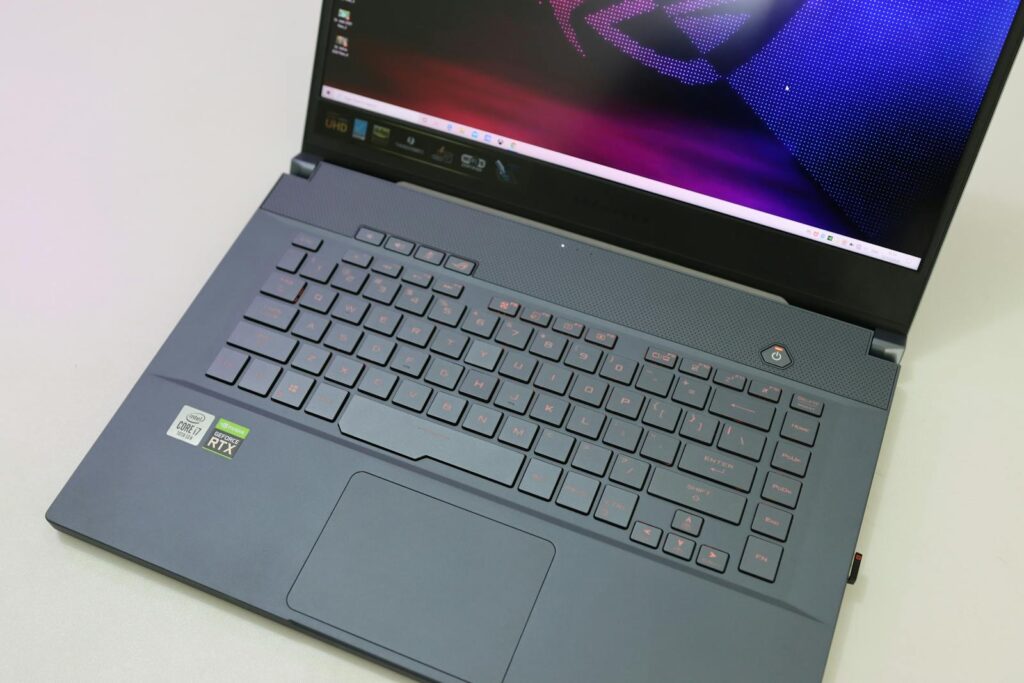
8. **Optimize Power Delivery with Your Charger**It might seem counterintuitive, but a simple yet often overlooked factor in laptop overheating during intense gaming sessions can be your power supply. Modern games are incredibly hardware-intensive, demanding a significant amount of electrical power from both your CPU and GPU. If your laptop isn’t receiving adequate power, particularly when running on battery or a sub-optimal charger, components may strain or mismanage their power draw, potentially leading to increased heat generation.
Users have frequently reported that connecting their laptop to the charger during gaming sessions can be a straightforward solution to prevent overheating. This ensures your system has a consistent and sufficient power supply, allowing your hardware to operate within its intended parameters without struggling for energy. While this might seem like a basic workaround, it’s a critical first step to ensure your powerful components are not being starved of the power they need to run efficiently, thereby mitigating unnecessary heat buildup.
While this solution addresses an immediate power delivery concern, it’s also worth noting that some users might experience overheating specifically when gaming while charging. This particular scenario often indicates deeper thermal management issues or potentially a faulty charger itself, which we will address later. However, for many, simply ensuring your laptop is plugged into a reliable power source during demanding tasks can significantly stabilize performance and help keep temperatures in check, making for a more comfortable and consistent gaming experience.
Read more about: V10 Powerhouses: Unearthing Every Dodge That Rocked a Ten-Cylinder Beast and How They Stacked Up
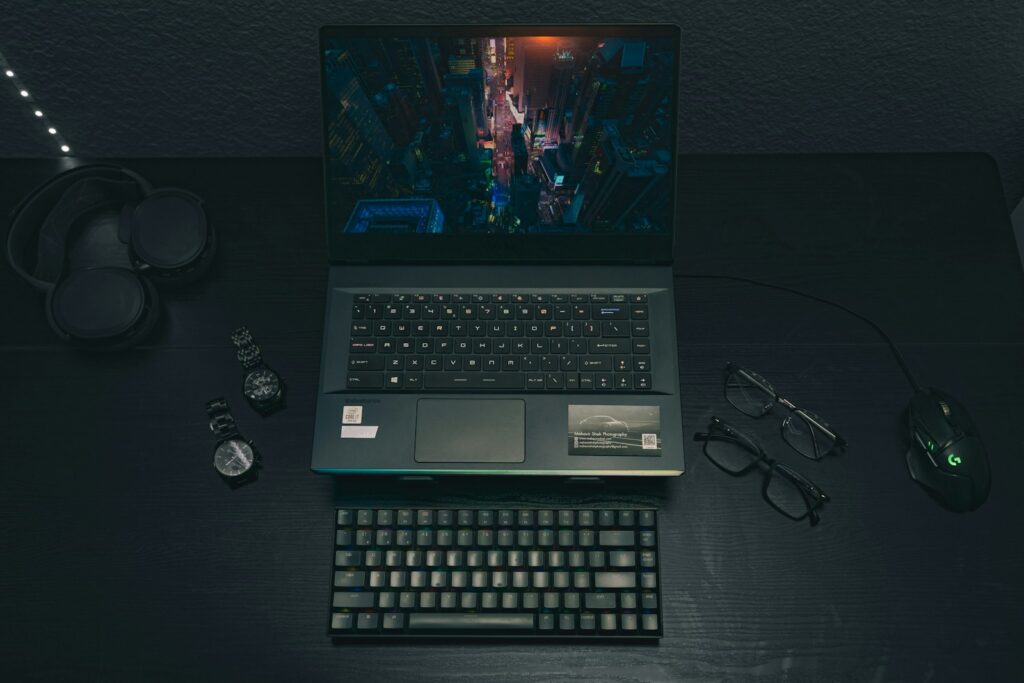
9. **Leverage Gaming Browsers for Resource Efficiency**In today’s interconnected gaming world, it’s common to have a web browser open in the background, whether for game guides, communicating with friends on Discord, or streaming music. However, standard browsers can be significant resource hogs, consuming considerable amounts of RAM, CPU, and network bandwidth. This background activity adds an often-unnoticed burden on your system, contributing to higher overall temperatures and potentially impacting your game’s performance.
This is where specialized gaming browsers, such as the award-winning Opera GX, come into play. These applications are specifically designed to address resource management, offering features that allow you to actively limit their access to computer resources. For instance, the GX Control Panel in Opera GX empowers users to restrict how much CPU and RAM the browser can utilize. This means you can keep essential browser functions running without them consuming excessive capacity that your game critically needs.
The core idea behind these browsers is to prevent them from becoming an additional source of heat by minimizing their resource footprint. By ensuring the browser isn’t constantly competing with your game for system resources, you alleviate strain on your CPU and RAM, which in turn reduces heat production. Furthermore, features like integrated Twitch and Discord access directly from the sidebar in Opera GX mean you don’t need additional, resource-heavy applications running, further streamlining your system for optimal gaming performance and thermal efficiency.
Read more about: Conquering Connectivity: The 15 Most Common Wi-Fi Problems Plaguing Modern Homes, and How to Fix Them
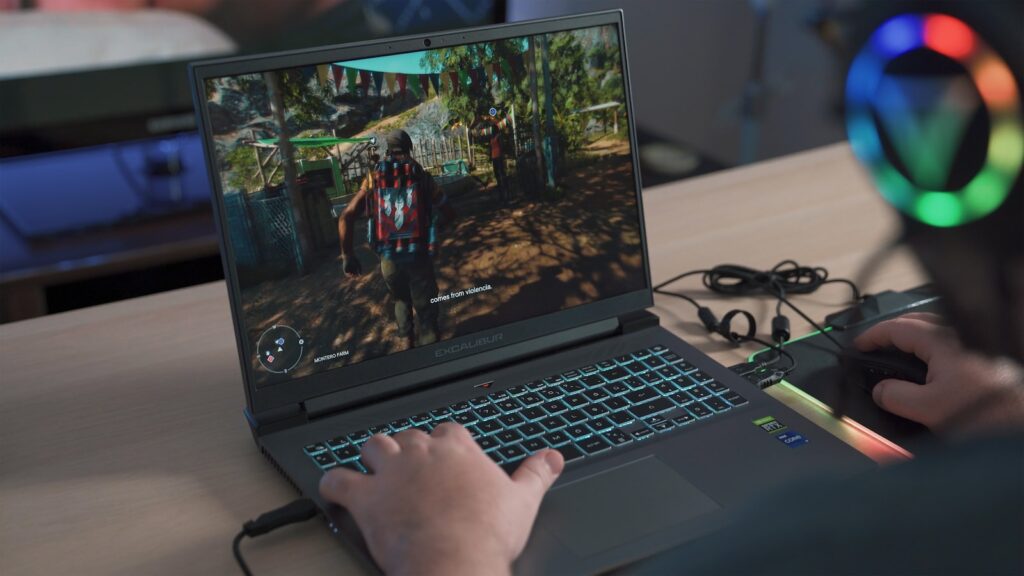
10. **Strategically Switch to Integrated Graphics**Every modern gaming laptop is equipped with two types of graphics processors: a powerful dedicated GPU (like an Nvidia GeForce RTX or AMD Radeon RX) for demanding tasks, and a less powerful, more efficient integrated graphics unit (often built into the CPU) for everyday computing. When your laptop is overheating, especially with less demanding games or during general use, your dedicated graphics card might be the primary culprit due due to its inherent power consumption and heat generation.
Dedicated graphics processors, while essential for high-fidelity gaming, naturally draw more power and produce more heat. For titles that aren’t graphically intensive, or if you simply need to reduce heat output for extended comfort or troubleshooting, temporarily switching to your integrated graphics can be a highly effective workaround. The integrated GPU uses significantly less power, leading to a considerable reduction in heat production, as it’s not designed for the same level of intensive processing.
While integrated graphics won’t deliver the same blistering performance as your dedicated card, they are perfectly capable of handling many older or less demanding games, as well as all standard desktop applications. To make this switch, you’ll typically need to delve into your graphics control panel software, such as Nvidia Control Panel or AMD’s Catalyst Control Center, and set the integrated graphics as the preferred or default processor for specific applications or globally. This strategic adjustment allows you to selectively manage power draw and heat, giving you control over your laptop’s thermal profile depending on the task at hand.
Read more about: Beyond the Battlefield: Thrilling FPS Games That Offer a Fresh Challenge for Call of Duty Fans
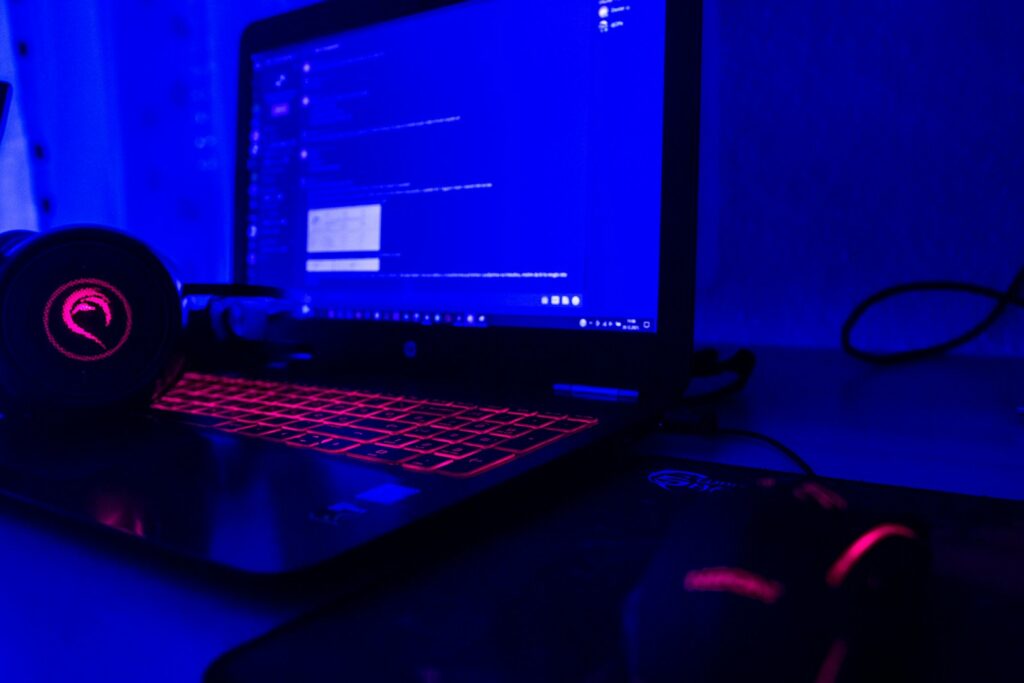
11. **Identify and Replace Faulty Hardware: Your Charger**While often overlooked, the power adapter you use to charge your gaming laptop plays a crucial role in its overall stability and thermal management. A healthy charger provides a consistent and appropriate power supply to your components. However, a faulty or underpowered charger can be a significant, yet subtle, contributor to overheating issues, transforming your gaming experience from smooth to scorching.
Users have reported instances where mysterious overheating problems were directly traced back to a malfunctioning charger. When a charger is unable to deliver the necessary wattage reliably, your laptop’s power management system might compensate inefficiently, leading to components drawing more current than intended or experiencing voltage fluctuations. This electrical stress can manifest as elevated temperatures, not only in the laptop itself but also sometimes in the charger brick.
If you’re experiencing persistent overheating despite trying other solutions, and especially if the issue occurs while charging, it’s worth investigating your charger. Examine the cable for any fraying or damage, and consider if it’s the original charger or a third-party replacement that might not meet your laptop’s specific power requirements. Replacing a suspect charger with a known-good, correctly rated unit can resolve an array of stability and thermal issues, ensuring your laptop receives the clean, consistent power it needs to run efficiently and coolly.
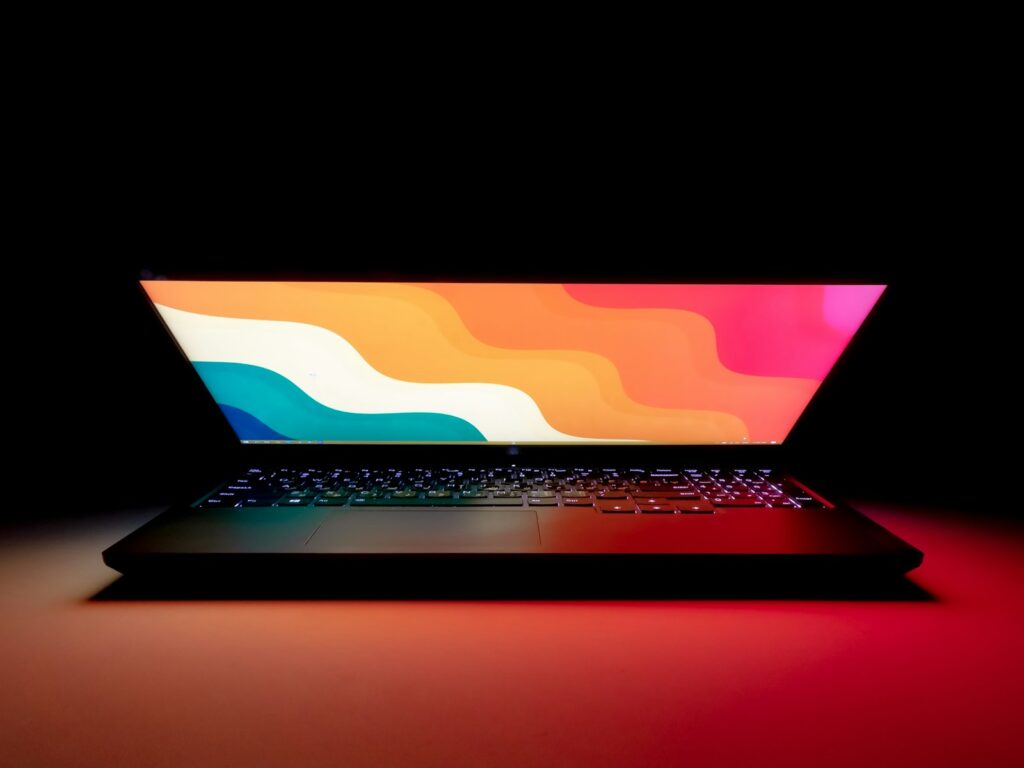
12. **Manage Frame Rates to Reduce Thermal Load**For many gamers, higher frames per second (FPS) equates to a smoother, more responsive, and ultimately better gaming experience. The pursuit of maximum FPS often pushes a gaming laptop’s CPU and GPU to their absolute limits, causing them to generate significant heat as they work tirelessly to render every frame. While impressive, constantly running at uncapped, extremely high frame rates can be a direct cause of thermal throttling and discomfort.
When your laptop is rendering frames far beyond what your monitor’s refresh rate can display, it’s essentially performing unnecessary work, generating excess heat without providing any tangible visual benefit to you. Limiting your FPS to a more reasonable and manageable value can drastically reduce the stress on your graphics card and CPU. For instance, if your monitor has a 60Hz refresh rate, capping your in-game FPS at 60 or even slightly below can prevent your hardware from overworking.
This simple adjustment, often found within a game’s graphics settings or through graphics driver control panels, ensures your hardware only produces the frames you can actually see. By reducing this unnecessary workload, your GPU and CPU can operate at lower power states and temperatures, leading to quieter fans, less heat, and often a more stable gaming experience free from thermal throttling. It’s a strategic trade-off that prioritizes sustained performance and thermal health over an unperceivable FPS count.
Read more about: Simple, Smart, and Sustainable: A Good Housekeeping Guide to Cutting Your Home’s Energy Bills
13. **Keep Software and Drivers Up-to-Date**The digital ecosystem of your gaming laptop is constantly evolving, with manufacturers regularly releasing updates for operating systems, hardware drivers, and applications. Neglecting these updates can be a silent contributor to performance inefficiencies and, consequently, increased heat generation. Maintaining up-to-date software is a fundamental yet powerful strategy for optimizing your laptop’s efficiency and thermal performance.
Windows updates, for example, often include crucial system optimizations and security patches that ensure your operating system runs smoothly and efficiently, reducing unnecessary strain on your CPU and RAM. More critically for gamers, graphics card manufacturers like Nvidia and AMD frequently release new drivers that contain performance enhancements, bug fixes, and, crucially, improved thermal management profiles specifically tailored for the latest games and hardware. These driver updates can significantly enhance your GPU’s efficiency, allowing it to perform better at lower temperatures.
Beyond core system and graphics drivers, keeping other hardware drivers (like chipset or network drivers) and frequently used applications updated also contributes to overall system stability and efficiency. Software optimizations often translate directly into better heat management, as components are utilized more effectively. Tools like ASUS’s Armoury Crate for gaming laptops or MyASUS for traditional notebooks provide streamlined access to all essential updates, enabling users to effortlessly download and install them, ensuring their device benefits from the latest performance and thermal improvements.
Read more about: Conquering Connectivity: The 15 Most Common Wi-Fi Problems Plaguing Modern Homes, and How to Fix Them
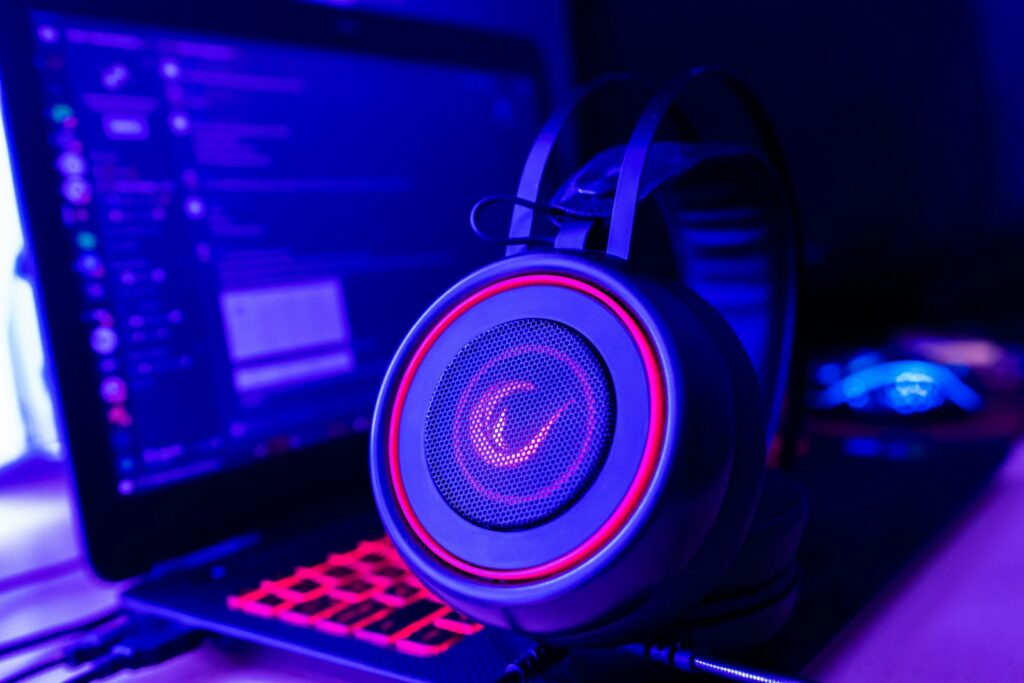
14. **Implement Real-time Temperature Monitoring**While implementing all the aforementioned cooling strategies is crucial, understanding their impact requires diligent observation. Real-time temperature monitoring is not just an advanced technique; it’s an indispensable practice for any serious gaming laptop owner. Without knowing your CPU and GPU temperatures, you’re essentially flying blind, unable to gauge the effectiveness of your cooling efforts or detect potential overheating issues before they become critical.
Several reliable software tools are available to help you keep a close eye on your system’s thermals. Programs like HWMonitor and Core Temp provide accurate, real-time readings of your CPU and GPU temperatures. Even Windows’ built-in features can offer some basic insights. The consensus among experts is that while gaming, CPU and GPU temperatures ideally should remain between 85°C to 90°C. Consistently exceeding this range signals that your cooling system is struggling, necessitating a pause in gaming to allow your laptop to cool down and preventing potential hardware damage.
Advanced gaming laptop users, particularly those with ASUS TUF and ROG machines, can leverage proprietary software like Armoury Crate. This powerful utility goes beyond simple monitoring, offering granular control over performance profiles, fan speeds, and even the ability to set thermal limits. Such tools, combined with ROG Intelligent Cooling systems, dynamically adjust cooling settings to balance performance and noise, giving you unparalleled insight and control. Being aware of the signs of overheating—such as excessive fan noise, performance drops, unusual heat emission, unexpected shutdowns, or screen artifacts—and actively monitoring temperatures are your best defense against your gaming laptop becoming a money pit.
Read more about: The 15 Most Bike-Friendly Cities in America: A Data-Backed Deep Dive into Urban Cycling Excellence in 2025
Mastering your gaming laptop’s thermal management is a journey of continuous adjustment and informed decision-making. While these machines are engineered for power, they inherently battle heat in their compact forms. By diligently applying these fourteen strategies—from careful power settings and in-game optimizations to advanced undervolting, diligent cleaning, and real-time monitoring—you transform your device from a potential money pit into a reliable, high-performing gaming companion. Understanding the nuances of heat generation and dissipation ensures not only a smoother, more comfortable gaming experience but also significantly extends the lifespan of your valuable hardware. Don’t just play; play smart, and keep your cool in the digital arena.



